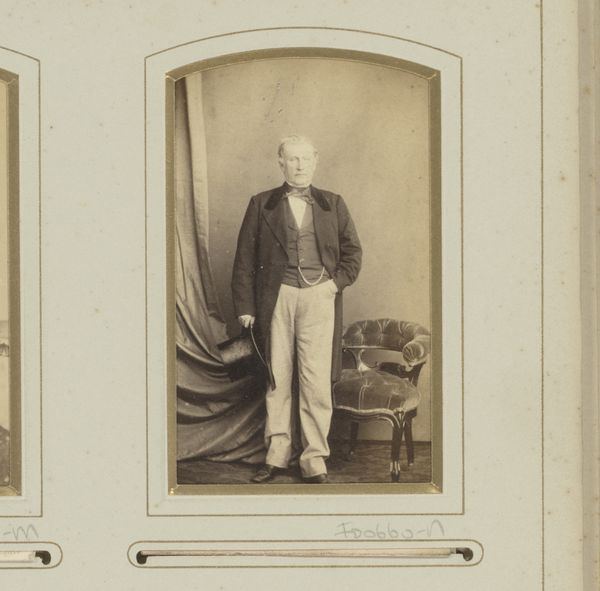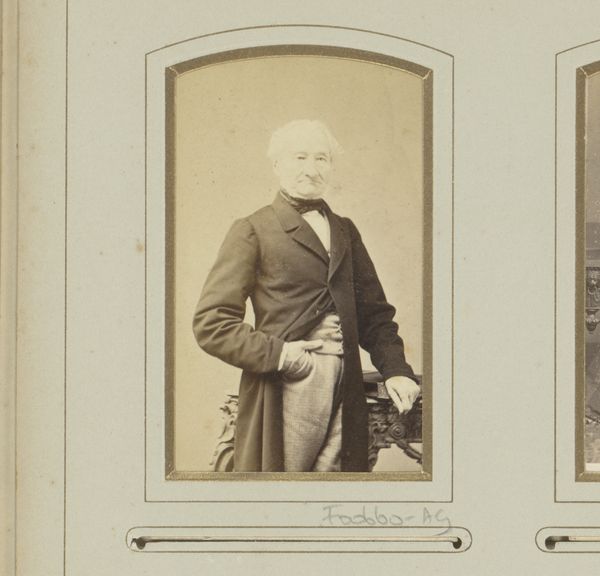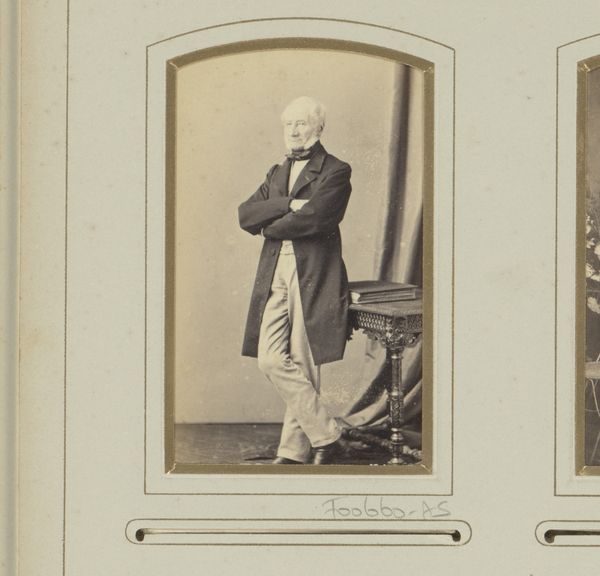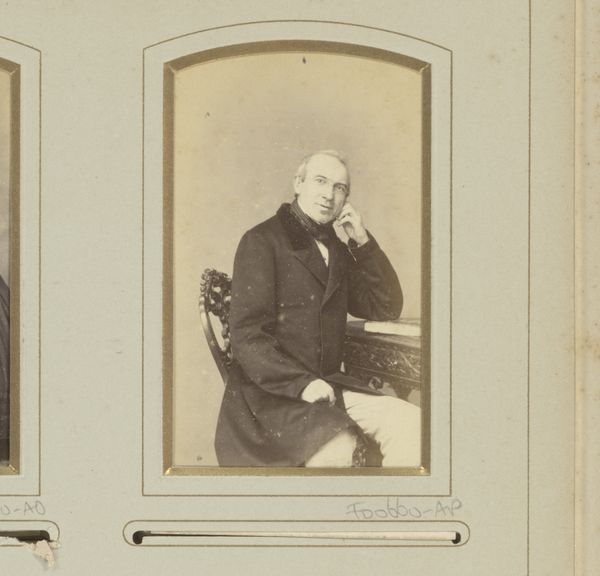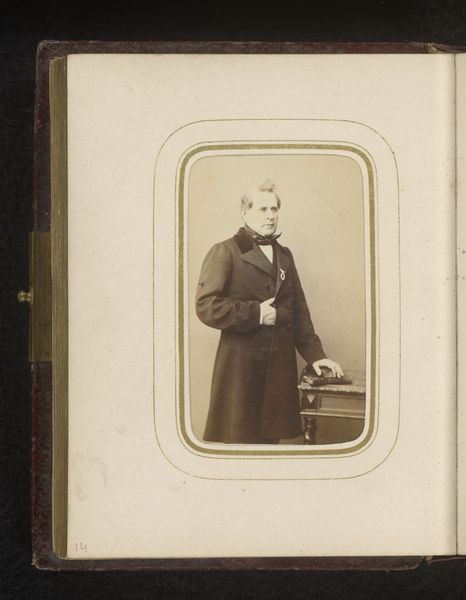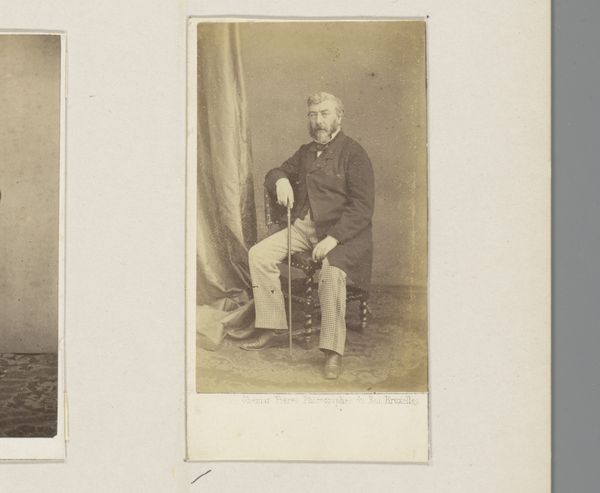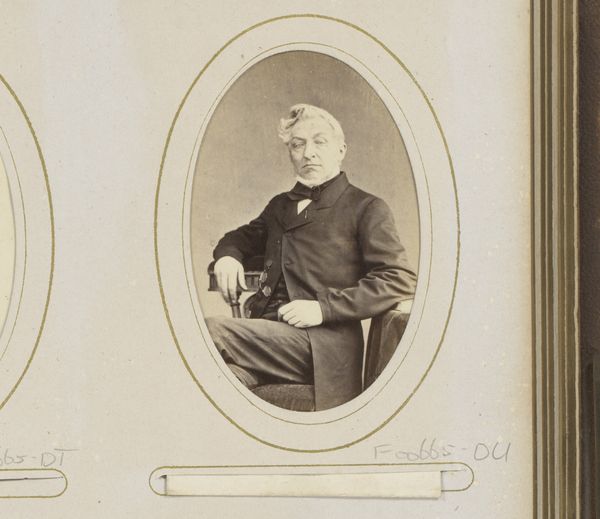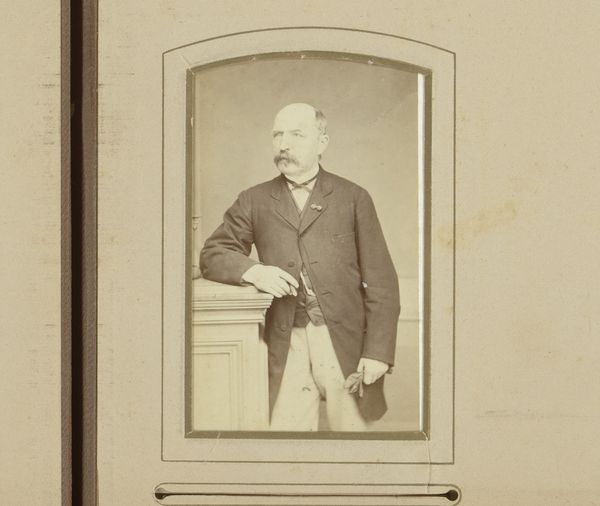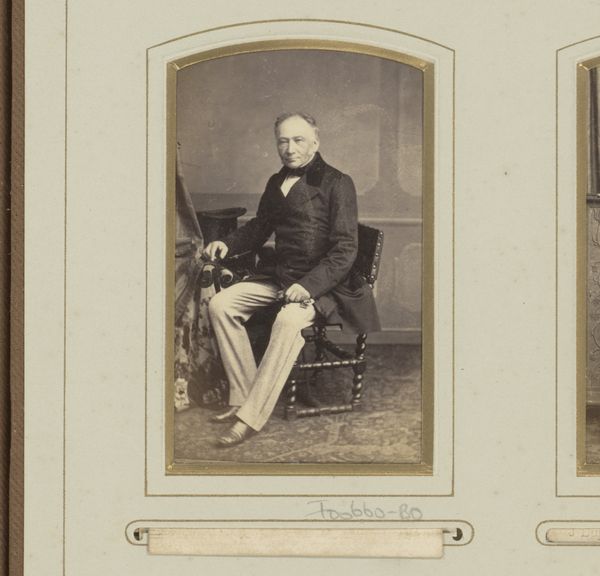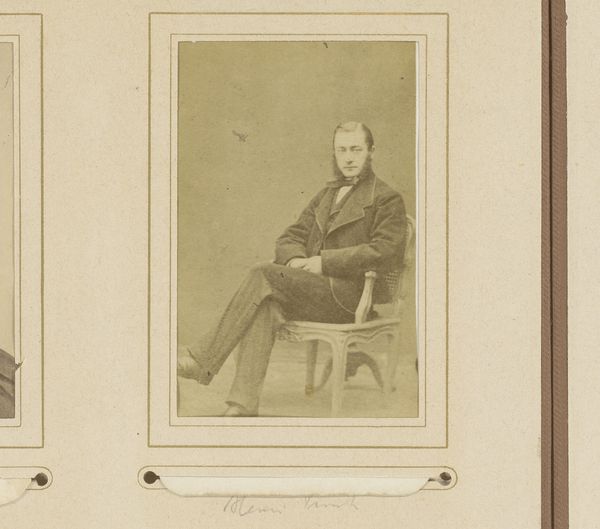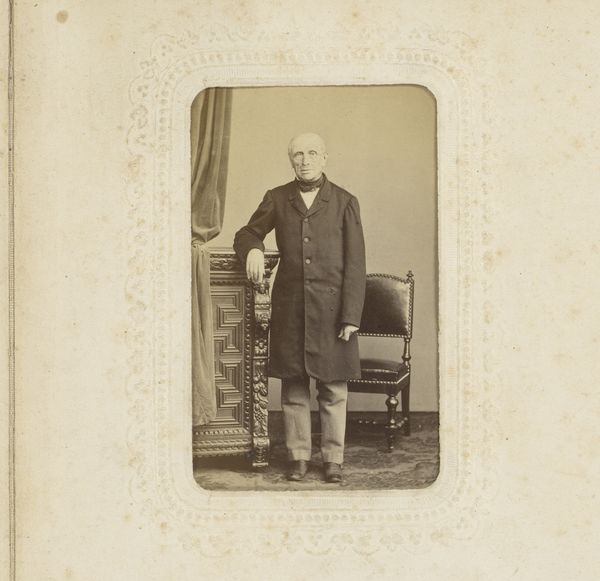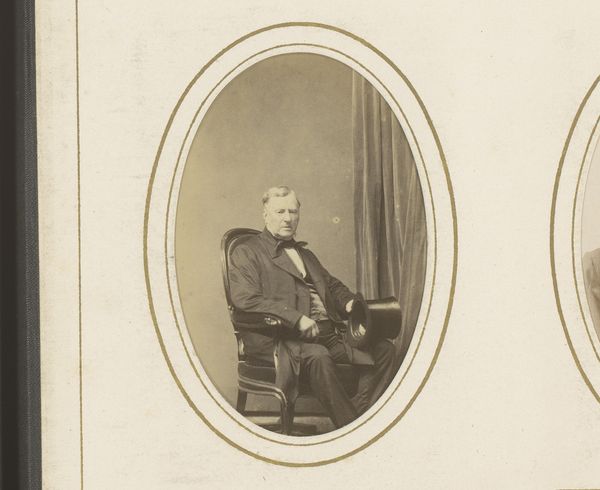
Portret van een staande man bij een stoel, met hoge hoed op de arm 1850 - 1900
0:00
0:00
photography
#
portrait
#
photography
#
historical photography
#
genre-painting
Dimensions: height 84 mm, width 51 mm
Copyright: Rijks Museum: Open Domain
Curator: This is a photograph titled "Portret van een staande man bij een stoel, met hoge hoed op de arm", attributed to Charles Billotte & Cie, placing it somewhere between 1850 and 1900. Editor: It’s striking. Somber tones, clearly staged… You can almost feel the weight of that coat. The high hat tucked under his arm really sets a formal, slightly subdued tone. Curator: Exactly. Consider the era. This was a time of burgeoning industrialization and solidified class structures. The man’s posture, his attire, are deliberate performances of bourgeois identity. How is this identity constructed, reproduced? How does photography contribute? Editor: Right, the very materiality of photography is relevant here, isn’t it? Think of the silver processes, the meticulous darkroom work. This wasn't instant gratification. It's labour intensive to produce and reproduce a likeness! Every detail – the choice of chair, the draping of his coat– adds up to wealth. Curator: Precisely. The chair becomes more than a functional object; it is also a visual shorthand, speaking volumes about domesticity and power. Editor: Do we know if Charles Billotte had some kind of social commitment? It might reveal their attitude to class in the social hierachy. Curator: Unfortunately, little concrete information about Charles Billotte is accessible right now. What we have are these preserved images and their power to represent not only their own customers but the social history of this group in nineteenth-century culture. Editor: Makes you wonder about what that social reality looks like when everyone has a camera on them all the time. How does art help with the understanding and the interpretation? Curator: Absolutely. Photography, particularly portraiture, then as now, functions to assert one’s presence, but also one's status and place within shifting power dynamics. Editor: In many ways it remains as valuable of a material artifact as a painting of nobility commissioned centuries earlier, just more democratic. Well, it has been until the digital era! Curator: Indeed, food for thought. It all brings together identity, gender, class and art practice.
Comments
No comments
Be the first to comment and join the conversation on the ultimate creative platform.
